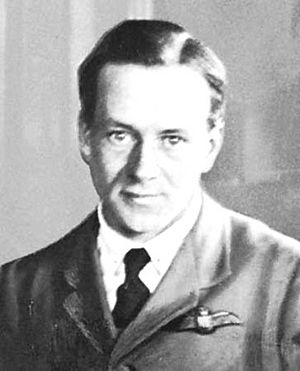Arthur Whitten Brown facts for kids
Quick facts for kids
Sir
Arthur Whitten Brown
|
|
|---|---|
 |
|
| Born | 23 July 1886 Glasgow, Scotland |
| Died | 4 October 1948 (aged 62) Swansea, Wales |
| Buried |
St Margaret Churchyard, Tylers Green, Buckinghamshire, England
|
| Allegiance | United Kingdom |
| Service/ |
British Army, Royal Air Force |
| Years of service | 1914–19, 1939–43 |
| Rank | Lieutenant-Colonel |
| Unit | University and Public Schools Brigade Manchester Regiment 2 Squadron Royal Flying Corps |
Sir Arthur Whitten Brown (born July 23, 1886 – died October 4, 1948) was a brave British military officer and pilot. He is famous for being the navigator on the very first non-stop flight across the Atlantic Ocean. He made this historic journey with pilot John Alcock in June 1919.
Early Life and War Service
Arthur Whitten Brown was born in Glasgow, Scotland. His parents were American. His father worked for a company called Westinghouse. The family later moved to Manchester, England.
Before World War I started, Brown began his career in engineering. He trained at British Westinghouse in Manchester. In 1914, he joined the army. He became a British citizen to do this. He joined a group called the University and Public Schools Brigade. Many smart young men joined this group.
Brown became a Second Lieutenant in the Manchester Regiment. This meant he was an officer. He served in France during the war. Later, he joined the Royal Flying Corps. He worked as an observer, helping to direct artillery fire.
Brown's aircraft was shot down twice. The first time was over France. He was sent back to England to get better. The second time, his plane was hit near Bapaume. He and his pilot were captured by the Germans. Brown was later held in Switzerland. He returned to England in September 1917.
After the war, Brown looked for a steady job. He wanted to get married. He met the daughters of Major Kennedy, who he worked with. He later married one of them. He approached a company called Vickers. This led to a big opportunity. He was asked to be the navigator for a special flight. This flight was to cross the Atlantic Ocean. John Alcock was already chosen as the pilot.
The First Transatlantic Flight

The historic flight happened on June 14, 1919. They took off from St. John's, Newfoundland, Canada. Their destination was Clifden, Ireland. The journey took 16 hours and 12 minutes. They flew about 1,980 miles (3,168 km).
They flew in a special Vickers Vimy bomber plane. This flight won a huge prize of £10,000. The Daily Mail newspaper offered this prize. It was for the first non-stop flight across the Atlantic. Just a few days later, King George V honored them. He made both Brown and Alcock Knights. This meant they were called "Sir."
Life After the Flight

After his famous flight, Sir Arthur worked for Metropolitan-Vickers. This company used to be British Westinghouse. In 1923, he became the chief representative for the company in Swansea, Wales.
During World War II, Brown served in the Home Guard. He was a Lieutenant-Colonel. He later rejoined the Royal Air Force. He worked in RAF Training Command. He helped with navigation training. His health began to get worse. By mid-1943, he had to leave the RAF.
Sir Arthur Whitten Brown's health continued to decline. He passed away on October 4, 1948. His ashes and his wife's ashes are buried in Tylers Green, England.
See also
 In Spanish: Arthur Whitten Brown para niños
In Spanish: Arthur Whitten Brown para niños
- Transatlantic flight of Alcock and Brown
- Transatlantic flight
|

